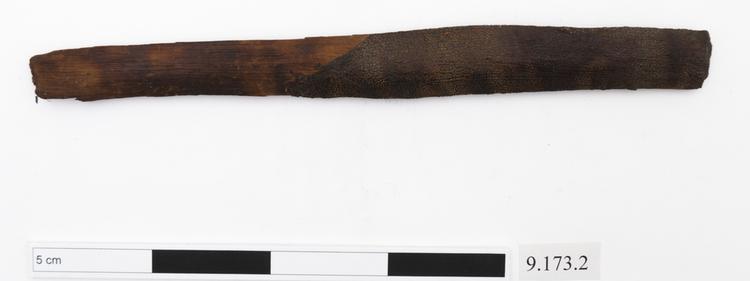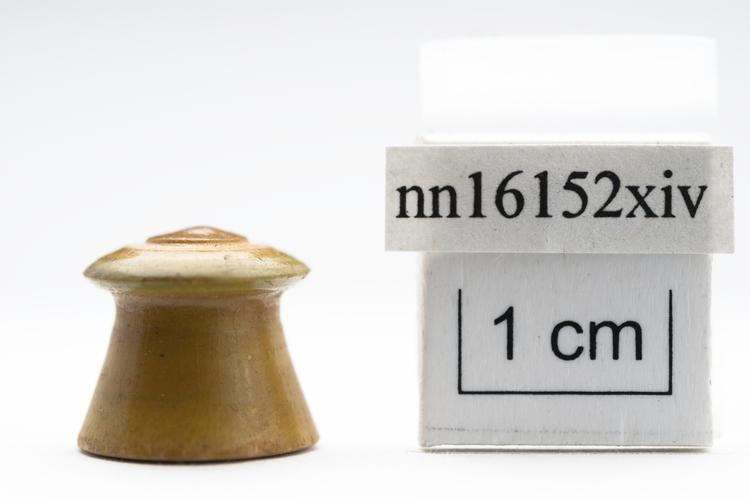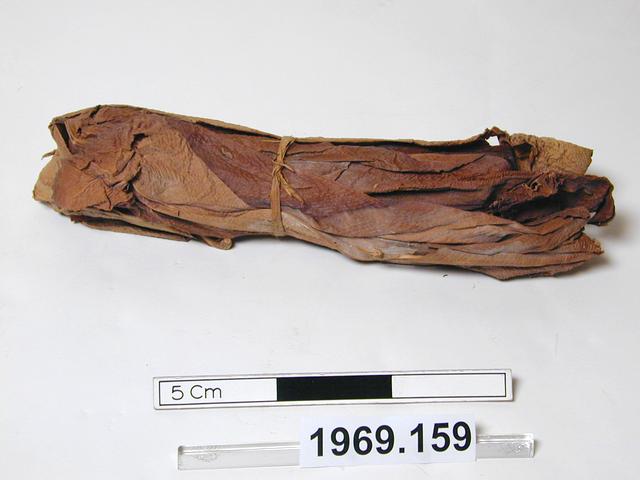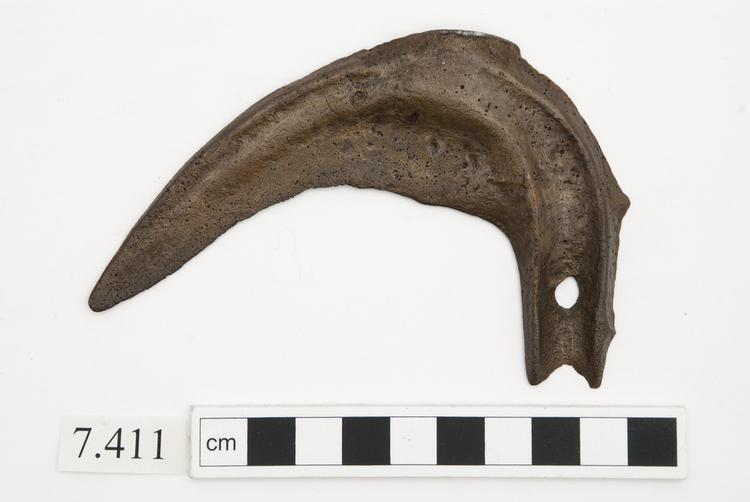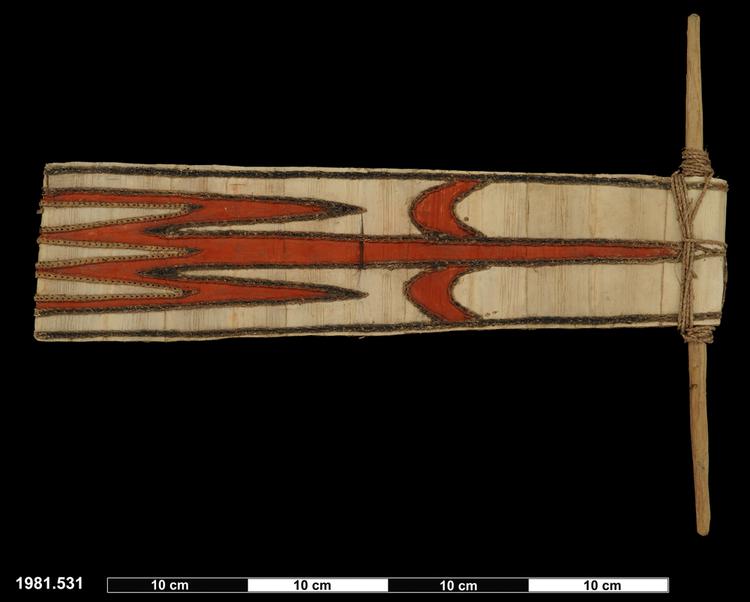
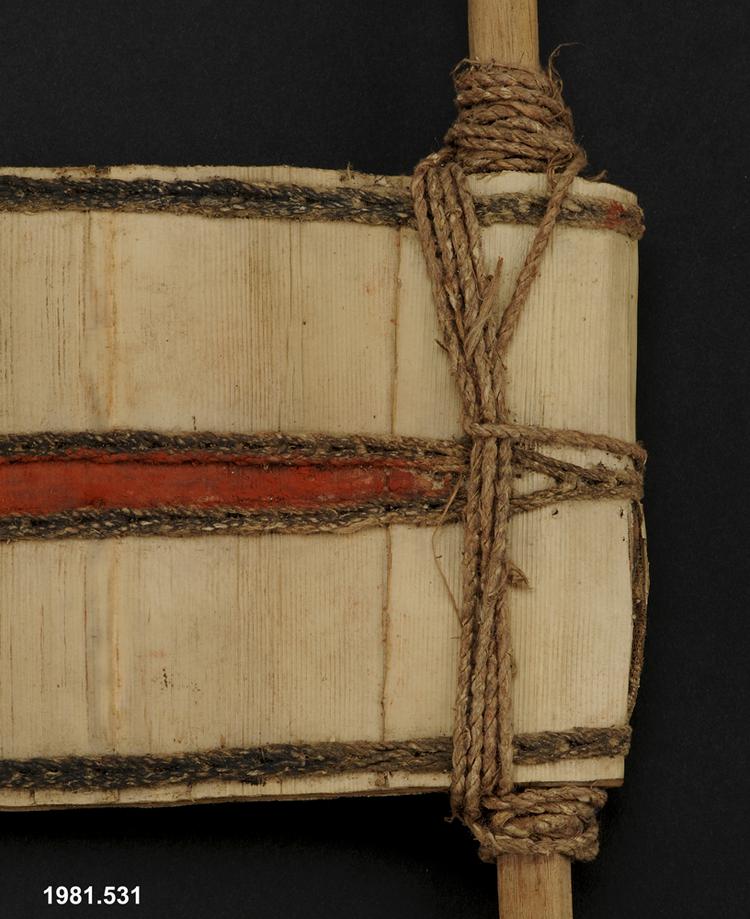
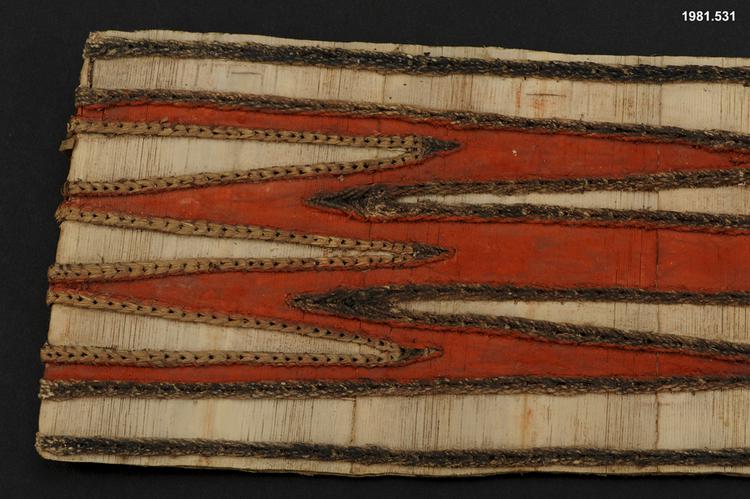
Man's emblem, a piece of pandanus decorated with panels of stitching daubed inside with red clay; lashed to a cross stick with string,
Man’s Emblem, Huli People, Southern Highlands Province, Papua New Guinea The Huli are one of the largest cultural groups in New Guinea, and by far the largest culture of the Southern Highlands. Gender relations were traditionally very rigid in Huli society, and men have a deeply ingrained belief that menstruating women have a supernatural power that can cause men who come into contact with their blood to conceive the egg of a bird-like animal in their bellies, which will kill them as it develops and hatches. Because of this belief, the sexes traditionally lived separately, before mass conversion to Christianity began to change people’s religious beliefs. Men and women would meet for sex and collective labour in the sweet potato gardens, but otherwise lived segregated lives. There were particular pieces of land in the Huli region around Tari where women were forbidden to enter, and some young bachelors chose to live in a semi-monastic seclusion. Known as haroli (‘hiding boys’), these men oversaw the initiation of all boys into manhood, and instructed them in the precautions and magical defences necessary to married life. Once a young man had undergone this process of preparation for marriage, he wore an emblem such as this example over his right shoulder. Pandanus leaf, mineral pigment, vegetable fibre. Mid-20th Century. Collected by the Lewis sisters during missionary service among the Huli.



